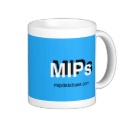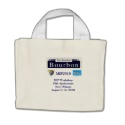|
|
Reference type: Journal
Authors: Li F, Du P, Chen W, Zhang SS
Article Title: Preparation of silica-supported porous sorbent for heavy metal ions removal in wastewater treatment by organic-inorganic hybridization combined with sucrose and polyethylene glycol imprinting.
Publication date: 2007
Journal: Analytica Chimica Acta
Volume: 585
Issue: (2)
Page numbers: 211-218.
DOI: 10.1016/j.aca.2006.12.047
Alternative URL: http://www.sciencedirect.com/science/article/B6TF4-4MSPV55-6/2/5501e0ca9f59433d2f92c7ee9cbf8088
Abstract: A new porous sorbent for wastewater treatment of metal ions was synthesized by covalent grafting of molecularly imprinted organic-inorganic hybrid on silica gel. With sucrose and polyethylene glycol 4000 (PEG 4000) being synergic imprinting molecules, covalent surface coating on silica gel was achieved by using polysaccharide-incorporated sol-gel process starting from the functional biopolymer, chitosan and an inorganic epoxy-precursor, gamma-glycidoxypropyltrimethoxysiloxane (GPTMS) at room temperature. The prepared porous sorbent was characterized by using simultaneous thermogravimetry and differential scanning calorimeter (TG/DSC), scanning electron microscopy (SEM), nitrogen adsorption porosimetry measurement and X-ray diffraction (XRD). Copper ion, Cu2+, was chosen as the model metal ion to evaluate the effectiveness of the new biosorbent in wastewater treatment. The influence of epoxy-siloxane dose, buffer pH and co-existed ions on Cu2+ adsorption was assessed through batch experiments. The imprinted composite sorbent offered a fast kinetics for the adsorption of Cu2+. The uptake capacity of the sorbent imprinted by two pore-building components was higher than those imprinted with only a single component. The dynamic adsorption in column underwent a good elimination of Cu2+ in treating electric plating wastewater. The prepared composite sorbent exhibited high reusability. Easy preparation of the described porous composite sorbent, absence of organic solvents, cost-effectiveness and high stability make this approach attractive in biosorption
Template and target information: copper ion, Cu(II)
Author keywords: Organic-inorganic, Hybrid, chitosan, imprinting, sol-gel, sorbent, silica gel, Porous
|


 mipdatabase.com logo mug
mipdatabase.com logo mug







 mipdatabase.com logo magnet
mipdatabase.com logo magnet







 MIP Workshop MIP2010 Tote bag
MIP Workshop MIP2010 Tote bag






